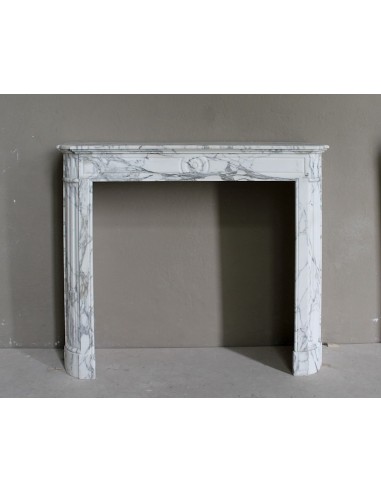Insiders in the fascinating field of the antique fireplace well know that fireplaces, just like humans, are basically divided into two broad categories: Males and Females.
Males are the mantels belonging to the Neoclassical family, of which Louis XVI, Empire, Directoire or Louis Philippe styles are part, and in any case all those fireplaces that have square lines, 90° angles, lines in short rather “on the linear,” while “female” fireplaces (Baroque family) have the soft and voluptuous lines of Louis XV, Regency and/or Louis XIV styles..
But... there are exceptions, as is only right, after all, in every human manifestation....
Oh God, in the world of ancient fireplaces we have not yet reached the trans that so much seems to manifest itself in the weaker world of men, but... to the “bisexual” mantels yes, there we have reached, I would also add happily since, in the 'amorous sphere, the Freedom to do what one wants is important heritage of our lives.
I, and here you will understand the reason for my strange incipit to this commentary, call this very charming Demi-Lune fireplace a “bisexual” fireplace in that it, while belonging to the Louis XVI stylistic sphere (and therefore properly masculine), softens its lines with those rounded and, you will allow me, slightly feminine sides... Personally, I find this melange of straight and curved lines to be very apt and I consider myself an admirer of this fireplace model, moreover the only one that can call itself “Napoleon III era,” I am only sorry that in this same era (1850-1880) most of the other fireplaces built are stylistic remakes of Louis XVI (last quarter of the 18th century) Antique models, while very few are Demi-Lune examples..
What, of interest, does the specific mantel I am presenting to you “propose”!
First of all, its line, its elegant architecture, soft but without excess, but also some equally elegant sculptural decoration, which I will list below:
A) First, that beautiful daisy in the center of the front, which is nothing but a tribute to the Sun King, Louis XIV, who was the grandfather, carnal and stylistic, of our Louis XVI;
B) Its “Pompeian flute” carvings carved within the grooves, both on the legs all, and on the head of the fireplace;
C) His, charming and very noble marble, that Arabescato Statuary marble which, since the time of Cosimo de Medici (who was a fervent admirer of it) has been at the top of the list of preferences of customers all over the world.
Needless to repeat that its design is French (better yet: “Parisian"), as French are ALL styles after the Italian Renaissance, however... Let us always remember, however, that fireplaces with the best quality of sculpture (as this mantel is) were carved in Italy and more precisely in Lunigiana (the ancient land of the Luni, at the foot of the Apuan Alps), where so many Sculpture workshops, commissioned by the French Maisons, churned out works of the highest quality, a quality achieved over more than two thousand years of experience. An Artistic and Artisan Heritage that cannot be equaled, perhaps one of the few things that no globalization will be able to take away from us.
PARISIAN PROVENANCE, ITALIC SCULPTURE, PERFECTLY PRESERVED, NAPOLEON III PERIOD.










































































